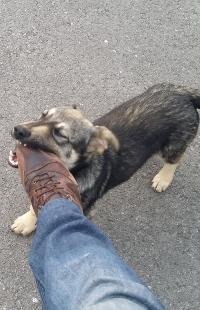Search Results (Searched for: )
- Cant do this anymore bye all

03 Aug 2024 02:50
Replied by Cant do this anymore bye all on topic LinuxCNC-RIO - RealtimeIO for LinuxCNC based on FPGA (ICE40 / ECP5)
LinuxCNC-RIO - RealtimeIO for LinuxCNC based on FPGA (ICE40 / ECP5)
Category: Computers and Hardware
- onceloved

03 Aug 2024 01:10
Replied by onceloved on topic linuxcnc 2.9.2 ethercat problem
linuxcnc 2.9.2 ethercat problem
Category: EtherCAT
- tommylight

03 Aug 2024 00:33
Replied by tommylight on topic Hardware needed to switch from mach 3 6 axis to linuxcnc 9 axis
Hardware needed to switch from mach 3 6 axis to linuxcnc 9 axis
Category: General LinuxCNC Questions
- rodw

03 Aug 2024 00:27
- spumco
- spumco
03 Aug 2024 00:25
Replied by spumco on topic Hardware needed to switch from mach 3 6 axis to linuxcnc 9 axis
Hardware needed to switch from mach 3 6 axis to linuxcnc 9 axis
Category: General LinuxCNC Questions
- rodw

03 Aug 2024 00:19
- rodw

02 Aug 2024 23:08
- rodw

02 Aug 2024 23:04
Replied by rodw on topic linuxcnc 2.9.2 ethercat problem
linuxcnc 2.9.2 ethercat problem
Category: EtherCAT
- rodw

02 Aug 2024 22:46
Replied by rodw on topic linuxcnc 2.9.2 ethercat problem
linuxcnc 2.9.2 ethercat problem
Category: EtherCAT
- rodw

02 Aug 2024 22:44
Replied by rodw on topic linuxcnc 2.9.2 ethercat problem
linuxcnc 2.9.2 ethercat problem
Category: EtherCAT
- rodw

02 Aug 2024 22:23
Replied by rodw on topic Ethercat installation from repositories - how to step by step
Ethercat installation from repositories - how to step by step
Category: EtherCAT
- Aciera

02 Aug 2024 22:11
Replied by Aciera on topic Data transfer LinuxCNC to / from custom board - Solved
Data transfer LinuxCNC to / from custom board - Solved
Category: Advanced Configuration
- slowpoke
- slowpoke
02 Aug 2024 21:39
Replied by slowpoke on topic Data transfer LinuxCNC to / from custom board - Solved
Data transfer LinuxCNC to / from custom board - Solved
Category: Advanced Configuration
- pippin88
- pippin88
02 Aug 2024 21:12 - 02 Aug 2024 21:13
Replied by pippin88 on topic Homing with Absolute Encoders (Again)
Homing with Absolute Encoders (Again)
Category: Advanced Configuration
- Aciera

02 Aug 2024 21:11 - 02 Aug 2024 21:12
Replied by Aciera on topic Hardware needed to switch from mach 3 6 axis to linuxcnc 9 axis
Hardware needed to switch from mach 3 6 axis to linuxcnc 9 axis
Category: General LinuxCNC Questions
Time to create page: 0.683 seconds


